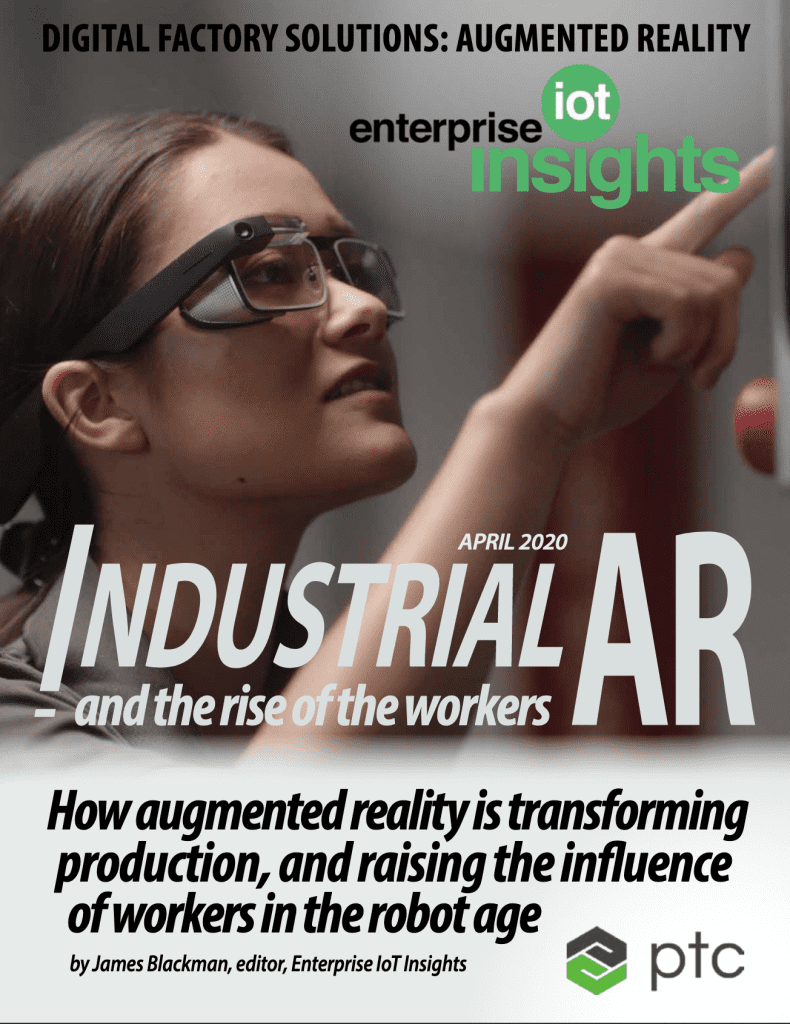In research for a new report on industrial AR, Enterprise IoT Insights caught up with Farid Bichareh, smart factory chair at the Industrial Internet Consortium and chief technology officer at research and engineering firm AASA (and also at subsidiary LiFi solution provider 01LightComm). Bichareh discussed the opportunities and challenges with AR and VR in the industrial space. Here is the interview, in full; the new report – Industrial AR, and the rise of the workers – is available to download here.
How is industrial AR / VR being used in manufacturing today?
“As of now AR / VR is being more used for simulation of the manufacturing process, and in maintenance, machine operations, and production processes – and also in product development, quality control, quality assurance, and training of employees on the shop floor.
“Many industries – such as aerospace, automative, oil and gas – are utilising these technologies widely. Information about the assembly process and sequence, and also the quality of assembly, can be seen and evaluated through AR smart glasses.
“New employees on the assembly line can experience the work before getting onto the shop floor, and repeatedly go through the process within a VR environment, [and fine tune their training with AR overlays when they go onto the shop floor].”
How will AR / VR be used in the future?
“In the coming years, AR / VR will be a part of the major tools of digital transformation of factories, and be widely used in efficiency of maintenance, to reduce downtimes and training times.

“It will also be used to simplify human based assembly-line processes and training of new employees, increase quality control and assurance accuracy, and minimise the failures.
“Besides these applications, industrial AR / VR will play a role in manufacturing design, providing capability to enable concepts such as digital twins, and in industrial IoT generally, as an interface for live data on the production line.”
How is the experience with industrial AR / VR, today? What works, and what doesn’t?
“Depending on the application and the challenges the manufacturing plant is trying to resolve, the cost of these technologies may still be considered high. This will be resolved in coming years, by development of mobile devices capabilities and more competition in the industrial AR / VR space. It is the same with the design of the hardware [which will become more powerful and more wearable].
“But the feedback from industry, unlike in the early days, is mostly positive now. Most of the failures so far have been more related to not having the right understanding of the requirements or challenges that needed to be resolved [than the AR / VR itself].”
What are the challenges with industrial AR / VR from a technology point of view?
“Like with most technologies, the safety of users and the security and privacy of their data are the top issues, followed by a lack [of and in understanding in the manufacturing sector, and], [available] apps. There is also a lack of regulation and standards [and, on a technology front, there are] challenges with high-end hardware, connectivity, and processing capabilities.”
What are the challenges from a behavioural point of view?
“Behavioural challenges are more associated with VR than AR. VR also raises some concerns for safety of the users and may require a controlled environment to make sure no harm comes. That is why AR has been more successful in certain industries and on the factory floor.
“Because workers are resistant to change, generally, and to use of new technologies in particular, implementation requires proper change-management and training.”
What are the software inputs in terms of digital thread / twins with industrial AR / VR?
“The enhancement of digital twins with AR / VR is one of the hot topics of the day. Digital twins give a 3D replica of an asset or process in a 2D viewing plane, on your computer or mobile device. With VR, you can go inside the this 3D model, and interact with it in a more real experience.
“In the case of AR, the idea is to have the digital twin replica of an asset and the related information to be overlaid on top the real asset. But both technologies bring digital twins to life, in as close as possible to a real-time reality. This enables a true smart factory optimisation and design.”
What are the requirements in terms of of connectivity for industrial AR / VR?
“The connectivity piece has many challenges: Security, scalability, bandwidth, interference, latency. Wired connections are not preferred, because they cause many restrictions, too much cost, and too much maintenance. 4G LTE, meanwhile, has certain issues around bandwidth, security, and scalability. 5G promises to resolve some of these issues but has its own challenges – because of the nature of electromagnetic interference, security with radio frequencies, and the high cost of the infrastructure.
“Other technologies have been suggested for the industrial IoT space, in fpr AR / VR in the smart factory, including a combination of 5G and light-based Li-Fi, which resolves most of the short comings of radio-based wireless communications. These combination looks very promising for making industrial IoT connectivity a reality.”
Check out the editorial report on industrial AR, Industrial AR – and the rise of the workers. The report is available to download here.


